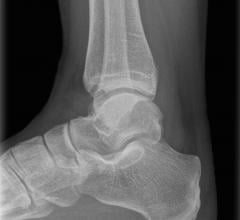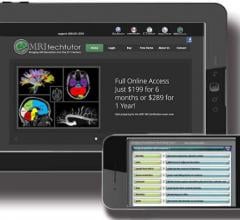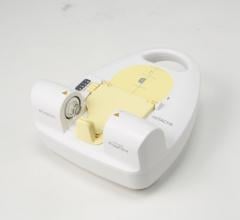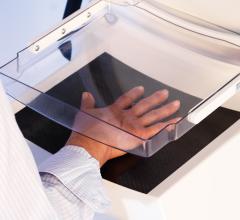November 27, 2007 - GE Healthcare has launched the company's new mobile system for bone mineral density (BMD) and body composition testing, to help expand the reach of healthcare to more patients while making diagnostic tools more accessible to physicians and clinicians. This is GE's first offering of its "fan-beam" X-ray bone densitometer technology in a mobile van using Dual-Energy X-ray Absorbtiometry, or DEXA scanning, to measure and calculate bone, fat and muscle mass.
The new Mobile Prodigy and other Lunar technologies are on display at RSNA.
The Mobile Prodigy contains the same features as the Lunar Prodigy to detect low bone mass and increased risk of fracture, with direct digital technology, precision and accuracy.
GE Lunar is also demonstrating technology to help physicians
measure BMD in children, as well as systems to enable licensed medical practitioners to simultaneously assess body composition and ascertain fat distribution in adults.
GE Lunar’s iDXA and Prodigy DEXA systems measure and calculate bone, fat and muscle mass for body composition analysis. Separate from BMD assessment, a new Body Composition Software system is said to help people and their physicians establish goals for weight loss, exercise and diet regimes. DEXA body composition can be useful alternative to hydrostatic weighing and skin fold measurements.
Lunar systems work by:
- Measuring the regional and whole body BMD, plus lean and fat tissue
mass.
- Calculating derivative values that can be displayed in user-defined statistical formats and trends with color image mapping, and compared to reference populations at the sole discretion of the healthcare professional.
These body composition values are useful to licensed medical
practitioners in their management of diseases and conditions where the disease and condition itself, or its treatment, can affect the relative amounts of patient fat and lean tissue. This GE Lunar Body Composition Software option does not diagnose disease, or recommend treatment regimens, or quantify treatment effectiveness. Some of the diseases/conditions
for which body composition values are useful include chronic renal failure, anorexia nervosa, obesity, AIDS/HIV and cystic fibrosis.
Lunar iDXA software also gives physicians dedicated reporting for body composition measurements and high percentage color fat mapping. Patients can easily follow the report divided into three compartments: lean mass, total body tissue percent fat, and bone density.
For more information: www.gehealthcare.com


 February 22, 2018
February 22, 2018 








